.id’s Community Profile (profile.id) is not just for larger councils. In recent years a number of small rural communities have joined the profile.id community, for the flexibility it has in demonstrating the story of your area. Every place, no matter how small, has a unique story to tell. In this blog our resident Census expert, Glenn Capuano, takes a look at the profile for one of our new small councils: Coober Pedy.
Coober Pedy is famous for its underground houses as a means of escaping the desert heat, and of course for being the opal mining capital of the world! This town of 1,834 people, located in the outback – far north SA, more than 800km from Adelaide – now has a Community Profile to tell its community story. The District Council of Coober Pedy is keen to use the site’s reporting function to contribute information about the population for use in council reports, and to use the insights offered through the profile as an advocacy tool to assist with grant funding applications.
Like all our profiles, it focuses on comparing local data to relevant benchmarks and tracking how data has changed over time. And it’s public access. You can access Coober Pedy’s profile here.
So what does a quick look at the Community Profile tell us about Coober Pedy?
Population
- The estimated resident population (2019) is 1,834.
- The town was settled in 1915, making it just over 100 years old, but the median age there is 46, up by 1 year since the previous Census, and only marginally older than the Regional SA average.
- There is a real mix of age groups, with a large share of population aged 70–79, but far fewer aged 80+ (probably due to its remoteness – people in this age group move to larger centres for health care). There is a substantial population aged 25–34 as well (14% of pop). But, like many areas around Australia, the largest increases in the last 5 years have been the older groups.
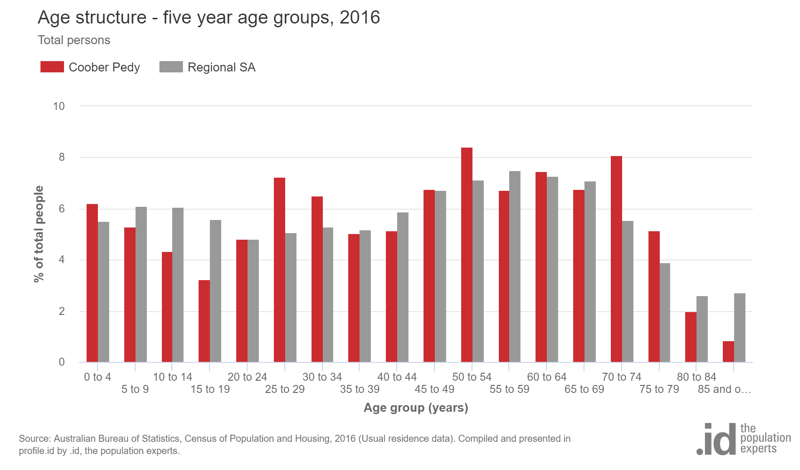
- Coober Pedy’s population is 54.6% male and 45.4% female – quite a variation from 50.4% and 49.6% across Regional SA. This is typical of outback towns which are more male-dominated.
- The greatest differences in the numbers of males and females are found in the older age groups.
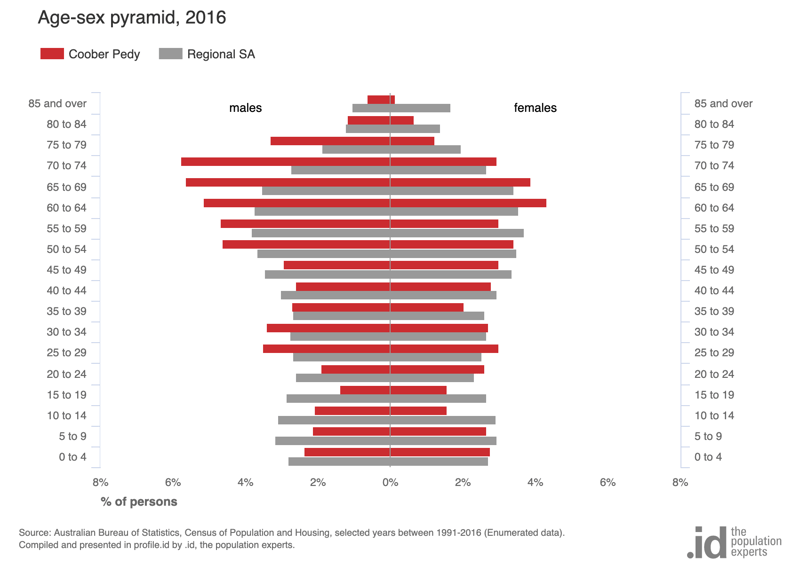
Diversity
- 299 people (17% of the population) identified as Aboriginal and Torres Strait Islander in 2016, up by 26 from the previous Census. Percentage-wise, this is the 5th highest of any LGA in South Australia.
- Coober Pedy has a very high level of cultural diversity for a small town. 26% of the population were born overseas and 24.5% speak a language other than English at home, which is more than double the average for Regional SA, and higher than the Australian average of 20.8%.
- The main communities are from Sri Lanka, plus a number of southern and eastern European communities, including Greece, Croatia, Serbia and Hungary. The languages spoken reflect this, plus 47 people speaking Australian Indigenous Languages, including Yankunytjatjara and Pitjantjajara. Language diversity continues to increase over time, with an increase of 25 non-English speakers since 2011.
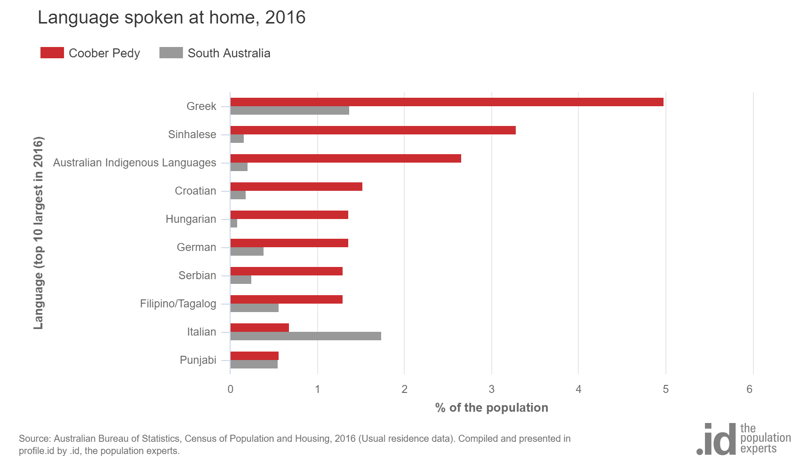
Socio-economic factors
- Coober Pedy is a relatively low socio-economic area, with a SEIFA index of disadvantage of 879, making it the 4th most disadvantaged LGA in South Australia. This is driven by relatively low incomes (42% in the bottom quartile of SA), a high level of disengaged youth (25% of those aged 15–24 are not employed or in education) and lack of internet access (28% of households have no internet). It is important for Local Government to be able to understand these characteristics, advocate on behalf of their community and look at measures to assist those areas of disadvantage.
- Despite its fame for opal mining, only 50 people, or 8% of the employed population, worked in the mining sector. The largest industry in Coober Pedy is health care and social assistance – the same as it is Australia-wide.
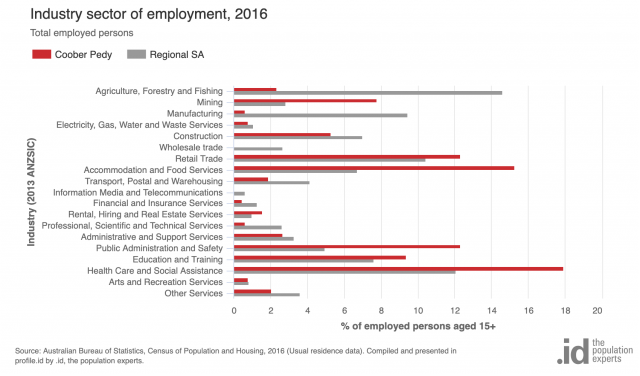
Households
- 36.4% of Coober Pedy’s population live in “lone-person households”. This is higher than Regional SA, which sits at 27.9%.
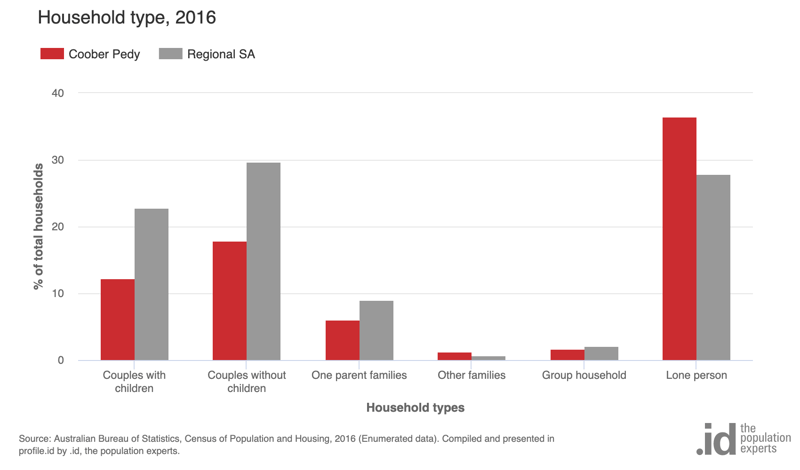
This is just a sample of some of the story provided by Coober Pedy’s Community Profile. We believe it will be an invaluable tool for council and community decision makers.
Need a Community Profile for your regional community? Contact us for more information at demographics@id.com.au.














